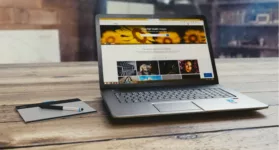Laptop are designed for use in typical office, school and home environments. In these conditions and following the guidelines of this document, your laptop should not represent a risk to you or the environment. However, the normal use of the laptop generates heat and uses electricity, so precautions must be taken to avoid physical injuries or property damage. This article offers basic guidelines for the proper use of your Laptop.
Safety is a major concern, but we also want to make the most of the laptop and avoid costly repairs. If you follow the guidelines and precautionary measures here, your laptop can work for many years without problems.
WARNING: To reduce the likelihood of physical injury due to heat or overheating of the equipment, do not place the equipment directly on your legs or obstruct the ventilation holes of the equipment. Use the equipment only on a flat, solid surface. Do not allow another hard surface, such as an optional printer, or a soft surface, such as pillows, rugs, or clothing, to block airflow. Also, avoid the AC adapter coming into contact with your skin or a soft surface, such as pillows, carpets or clothing, during operation.
You can significantly reduce the risks to the laptop by paying attention to the environment. Taking simple precautions, such as using the laptop on a rigid surface, keeping it in a dust-free place, using a refrigerator stand or an external fan, will help it function as it should.
1. Do not use the laptop on your legs or allow hot surfaces to come in contact with your skin. If you want to use it on your legs, support it on a flat, hard surface, such as a tray specially designed for laptops. Do not use your laptop on soft surfaces, such as bedspreads, pillows, clothes, or rugs. These surfaces can block the flow of air through the ventilation holes, which can cause heat to build up inside the notebook case.
2. Keep the LCD screen away from direct sunlight for long periods of time.
3. The laptop is designed to regulate the activity automatically when the internal temperature exceeds the predefined levels. If the internal temperature rises too high, the laptops are designed to go off by itself to protect the internal components.
4. Do not leave the laptop in a place with high temperature, such as inside a parked car or in direct sunlight. Any of these things can cause heat damage and bend it.
5. Typical lithium-ion batteries that laptops use do not charge properly at temperatures of 30 to 50 ° F (0 to 10 ° C). At these temperatures, the battery charges very slowly and does not reach full charge before completing the charge cycle. For proper operation, take the laptop to a cooler environment, where the internal temperature of the battery can exceed 50 ° F (10 ° C). If the battery remains in a low temperature environment for 12 hours or more, you must heat the laptop and the battery and then perform a hardware reset of the laptop. To perform a hardware reset, disconnect the AC adapter, remove the battery and then press and hold the power button for approximately 15 seconds. Then, reinstall the battery, connect the AC adapter again and press the power button to turn on the laptop again.
6. Do not use or store the equipment in high humidity environments, with dust, dirt, or smoke. Laptops generally have ventilation holes on the bottom and sides, to allow air circulation inside and cool internal components. If these holes become clogged or if dust builds up on the parts that generate heat, the fan cannot properly cool the internal components. Use compressed air in the ventilation holes to remove accumulated dust and maintain the flow of air through the equipment.
7. Do not use the keyboard with dirty or sticky hands. Some particles can adhere and easily contaminate the internal components of the equipment. These particles can also scratch or stain the laptop screen when the lid is closed.
8. Do not eat or drink while using the laptop. Do not use the PC in any humid environment, such as a pool or shower, and protect the components from any source of liquids, including rain and sprinklers for irrigation.
9. Do not store the laptop in the back of a closet or in a bag full of books, or under anything that can exert enough pressure to crack the case or screen.
10. Do not use pens, pencils or other objects to enter data on the screen, use only your fingers.
If you have a used device or its performance lags behind what you need, then the best option is to sell the laptop and consider a new one.








